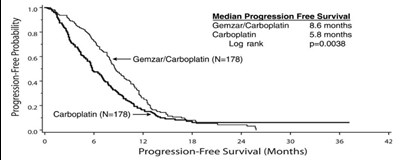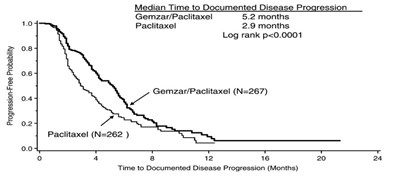Product Images Gemcitabine Hydrochloride
View Photos of Packaging, Labels & Appearance
- image description - gemcitabine hydrochloride 1g carton label
- image description - gemcitabine hydrochloride 1g vial label
- image description - gemcitabine hydrochloride 200mg carton label
- image description - gemcitabine hydrochloride 200mg vial label
- image description - gemcitabine hydrochloride graph 1
- image description - gemcitabine hydrochloride graph 2
- image description - gemcitabine hydrochloride graph 3
- image description - gemcitabine hydrochloride graph 4
- image description - gemcitabine hydrochloride structure
Product Label Images
The following 9 images provide visual information about the product associated with Gemcitabine Hydrochloride NDC 82511-009 by Teyro Labs Private Limited, such as packaging, labeling, and the appearance of the drug itself. This resource could be helpful for medical professionals, pharmacists, and patients seeking to verify medication information and ensure they have the correct product.
image description - gemcitabine hydrochloride 1g carton label

This is a description of Gemcitabine, a cytotoxic agent for injection used intravenously. It is a sterile single-dose vial that should not be refrigerated. Each vial contains gemcitabine hydrochloride expressed as the free base, along with other components. The usual dosage instructions are provided in the package insert. Prior to and after reconstitution, it should be stored at controlled room temperature. The reconstitution process involves adding sodium chloride injection to make a solution, which should be administered within 24 hours of preparation. The product is manufactured by Teyro Labs Private Limited in Tamil Nadu, India.*
image description - gemcitabine hydrochloride 1g vial label

This text provides instructions for the use and administration of Gemcitabine, a cytotoxic agent used for intravenous injection. It includes details about the contents of the vial, storage conditions, reconstitution process, dosage information, and manufacturer details. The text also emphasizes the importance of following package insert guidelines and not refrigerating the medication.*
image description - gemcitabine hydrochloride 200mg carton label

Gemcitabine is a sterile, lyophilized powder for injection used as a cytotoxic agent in the treatment of certain cancers. The single-dose vial contains Gemcitabine HCl, with each vial containing 200 mg of gemcitabine. The product should not be refrigerated and must be stored between 20°C to 25°C. To reconstitute, add 5 mL of 0.9% Sodium Chloride Injection and shake to dissolve. The solution should be administered intravenously within 24 hours. Manufacturer: Teyro Labs Private Limited, located in Tamil Nadu, India.*
image description - gemcitabine hydrochloride 200mg vial label

This text provides information about a medication with the NDC 82511-008-20 indicated for injection use only. The vial contains 200 mg of gemcitabine, 200 mg of mannitol, and 12.5 mg of sodium acetate. It instructs to not refrigerate and store between 20°C to 25°C. The medication needs to be reconstituted by adding 5 mL of 0.9% Sodium Chloride Injection. The solution needs to be administered within 24 hours and any unused portion should be discarded. It warns that it is a cytotoxic agent manufactured by Teyro Labs Private Limited in Tamil Nadu, India.*
image description - gemcitabine hydrochloride graph 1

This text provides information about the median progression-free survival for two different treatments - Gemzar/Carboplatin and Carboplatin. The text shows that the median progression-free survival for Gemzar/Carboplatin is 8.6 months while for Carboplatin it is 5.8 months, with a significant difference indicated by a log rank p-value of 0.0038. The data is based on a sample size of 178 for each treatment. The graph shows the progression-free survival over time (in months) for both treatments.*
image description - gemcitabine hydrochloride graph 2

This text provides data on the Progression-Free Probability and Median Time to Documented Disease Progression for two treatments: Gemzar/Paclitaxel (5.2 months) and Paclitaxel (2.9 months). The analysis shows a statistically significant difference (p<0.0001) between the two treatments. The graph displays the time to documented disease progression in months for each treatment group.*
image description - gemcitabine hydrochloride graph 3

This is a comparison of survival probabilities between Gemcitabine/Cisplatin treatment and Cisplatin treatment based on median survival and 1-year survival rates. The data includes survival times in months, with Gem/Cis having a median survival of 9.0 months and 39% 1-year survival rate, while S Cis has a median survival of 7.6 months and 28% 1-year survival rate. The p-values for the comparison are Logrank: 0.008 and Wilcoxon: 0.018.*
* The product label images have been analyzed using a combination of traditional computing and machine learning techniques. It should be noted that the descriptions provided may not be entirely accurate as they are experimental in nature. Use the information in this page at your own discretion and risk.

